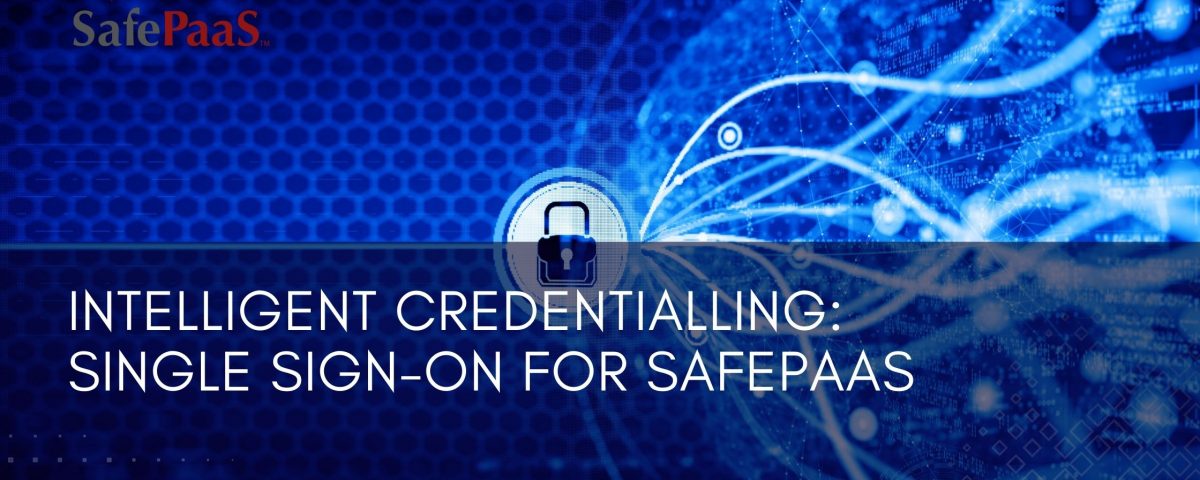Intelligent Credentialling: Single Sign-On for SafePaaS


Intelligent Credentialling: Single Sign-On for SafePaaS
Businesses struggle to balance convenience and security. Enter Single Sign-On for SafePaaS - a security solution that streamlines access and fortifies your organization's defense against cyber threats.
Why is Single Sign-On so Important?
SSO allows users (employees, partners, and customers) to access multiple applications and systems with a single set of credentials, profoundly benefiting organizations seeking to enhance their cybersecurity measures.
- Enhanced User Experience: Users experience a seamless login process. No more juggling multiple usernames and passwords, reducing frustration and streamlining the user experience.
- Increased Productivity: Time spent on password resets and login troubleshooting decreases, letting users focus on their core responsibilities and creating efficiency by cutting through the complexity of managing multiple credentials.
- Simplified Access Management: SSO introduces a centralized access point, giving you granular control over user permissions and allowing administrators to easily control who can access what, when, and for how long.
- Reduced Password Fatigue: Password fatigue is relieved because users no longer need to remember a collection of passwords, which shrinks the likelihood of weak passwords being used.
Advantages of Single Sign-On for SafePaaS
- Enhanced Access Governance Participation: Elevate participation in access governance across the enterprise by ensuring that users with network access via IDM systems like Azure, Okta, and Ping Identity can seamlessly log in to SafePaaS using single sign-on credentials. This facilitates the request for fine-grained privileges within enterprise applications, allowing for complete visibility into user and identity behavior across the entire enterprise. Organizations with complex enterprise systems require Identity Life Cycle Management solutions to control access for onboarding employees, contractors, and third parties. Any change to work assignments or departures from the organization requires immediate updates to security privileges in compliance with access governance policies to ensure users only have access to what they need while removing access they don’t need.
- Effortless Certification Processes: Simplify certification processes as managers can seamlessly log in to SafePaaS on a periodic basis to verify the access of their direct reports. Single sign-on ensures that those with access have accurate permissions, making the certification process effortless and seamless.
- Streamlined SoD Controls: Enable control owners responsible for segregation of duty controls to log in, review assigned roles, and protect the company's privileges on behalf of their teams. With single sign-on, they can efficiently identify and remediate segregation of duty risks, ensuring a secure environment.
- Effective Application Monitoring Controls: Facilitate easy management of application monitoring controls for business process owners and experts. For instance, procurement managers can log in to check changes in the purchase order approval hierarchy, while the finance team can review and correct any inappropriately processed journal entries from the previous day, ensuring the integrity of the system.
- Reduced Cyber Risks: Centralized access control minimizes the risk of unauthorized access. You can enforce strong authentication criteria, including multi-factor authentication, ensuring that only authorized users gain entry.
- Mitigation of Credential Attacks: Credential-based cyber attacks, such as phishing and brute-force attempts, are mitigated. Diminish the attack surface by reducing login points and fortifying authentication processes.
- Rapid Response to Access Changes: During employee onboarding, offboarding, or role changes, Enable fast adjustments to access permissions. This agility ensures that access governance stays dynamic and responsive to organizational shifts.
- Enhanced Monitoring and Auditing: Security teams gain real-time insights into user activities, enabling quick detection of suspicious behavior and potential security threats with strong monitoring and auditing capabilities.
Single Sign-On goes beyond its technical capabilities to integrate your entire enterprise into your broader access governance mission. SSO empowers you to actively engage in the access governance mission, offering a pathway to accomplishing your goals. By enabling SSO for SafePaaS using systems such as Azure, Okta, and more, you are implementing a technical solution and creating a strategic approach to enhance your enterprise's security.

